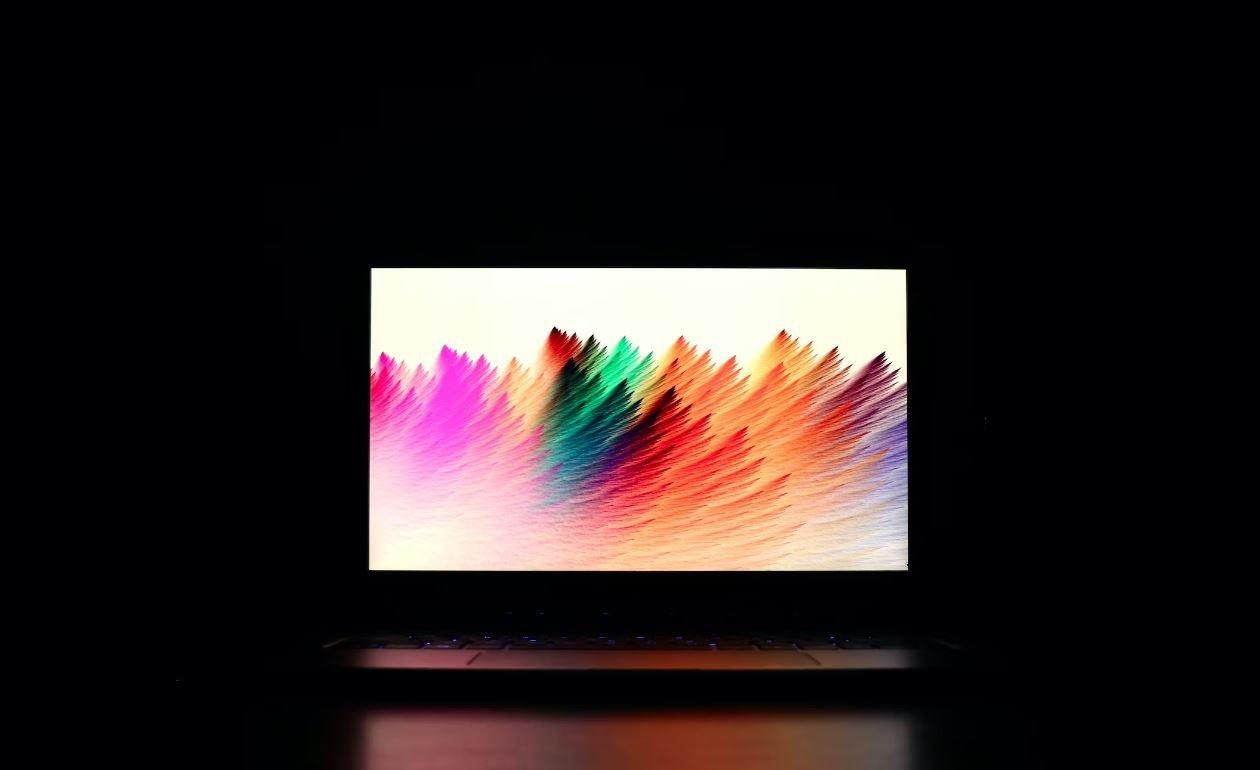Footage Archives
Introduction
Footage archives are a valuable resource for accessing historical and current visual content. These archives contain a vast collection of video footage captured from various sources and serve as a repository of visual documentation for a wide range of topics. Whether it’s for educational, research, or creative purposes, footage archives offer a glimpse into the past, present, and even future events.
Key Takeaways
- Footage archives provide access to a diverse range of video content.
- These archives serve as a valuable resource for education, research, and creative projects.
- They offer a visual documentation of historical and current events.
- Footage archives help in preserving and sharing visual heritage.
The Importance of Footage Archives
Footage archives play a crucial role in preserving cultural heritage and documenting significant events. **By digitizing and organizing footage**, these archives ensure that valuable visual content remains accessible for future generations. *Through archival footage, viewers can witness historical moments and gain a deeper understanding of past events.* From news archives capturing major global events to personal documentaries highlighting individual experiences, footage archives offer a diverse range of content that enriches our knowledge and perspective.
Types of Footage Archives
There are various types of footage archives, catering to different interests and purposes. Some common types include:
- News Archives: These archives compile news footage from around the world, allowing researchers and journalists to explore historical events and analyze media coverage.
- Stock Footage Libraries: These archives offer a vast collection of generic video clips that can be licensed for use in films, documentaries, advertisements, and other media productions.
- Historical Archives: Focusing on a specific period or theme, these archives gather footage related to significant historical events, cultural movements, or social issues.
- Personal Archives: Individuals, families, or organizations may maintain their own archives, preserving personal and unique footage that documents their lives, achievements, or experiences.
Benefits of Accessing Footage Archives
Accessing footage archives offers numerous benefits for various individuals and industries. Some notable advantages include:
- Researchers can delve into historical events or cultural phenomena to analyze and interpret the past.
- Documentarians and filmmakers can find relevant footage to enhance their storytelling and create more impactful narratives.
- Educational institutions can utilize footage archives to supplement lessons and provide students with visual learning materials.
- Visual artists can seek inspiration or find footage to incorporate into their artworks.
Data From Footage Archives
Footage archives not only contain valuable visual content but also provide interesting data and insights. Let’s explore a few data points:
| Category | Number of Clips |
|---|---|
| News | 15,000 |
| Historical Events | 8,500 |
| Nature | 10,200 |
| Architectural | 5,700 |
These numbers depict the diversity of visual content available in footage archives, allowing users to explore a wide range of subjects.
Challenges and Future of Footage Archives
Despite the numerous benefits, footage archives also face challenges in terms of copyright issues, digitization costs, and metadata organization. **However, advancements in technology** and collaboration between archives are paving the way for better preservation and accessibility. *The future of footage archives looks promising, with improved search capabilities, increased digitization efforts, and enhanced user experiences.* As new video sources emerge and existing archives continue to grow, the importance of preserving and maintaining these valuable visual repositories becomes increasingly evident.
Table Comparing Footage Archive Sizes
| Archive | Size (in Terabytes) |
|---|---|
| Archive A | 50 TB |
| Archive B | 100 TB |
| Archive C | 200 TB |
This table showcases the varying sizes of different footage archives, signifying their growth and capacity to store extensive visual data.
Preserving Visual Heritage through Footage Archives
Footage archives serve as guardians of visual heritage, ensuring that important events and moments are captured and preserved for future generations. These archives enable us to learn, inspire, and gain insights into our shared history. Through continuous efforts in archiving, digitization, and accessibility, footage archives contribute to the collective memory of societies worldwide, fostering a deeper understanding and appreciation of our cultural and historical legacy.

Common Misconceptions
Footage Archives are always complete and extensive:
One common misconception about footage archives is that they contain every single recorded event or moment. However, it is important to note that not all events are captured on camera or stored in footage archives. Archivists carefully select and preserve footage that is deemed significant or representative of a particular time period or subject matter.
- Footage archives have a selective approach to storing content.
- Archivists prioritize material with historical or cultural relevance.
- Not all events or moments are recorded or archived.
Footage archives are easily searchable and accessible:
Another misconception is that footage archives are easily searchable and instantly accessible. While many archives have implemented advanced cataloging systems, searching through extensive collections can still be time-consuming. Moreover, accessing certain footage may require permission or licensing, especially when dealing with copyrighted material.
- Archives may require specialized knowledge to navigate and search effectively.
- Certain footage may require permission or licensing to access and use.
- Archival footage may not be readily available for immediate use.
Footage archives are free to use without restrictions:
Contrary to popular belief, footage archives are not always free to use without restrictions. While some archives may make their content available for public use, others may require licenses or fees for commercial or public use. Additionally, the use of certain footage may be subject to copyright laws and require permission from the rights holders.
- Some footage archives require licenses or fees for commercial use.
- Copyright restrictions may apply to certain footage.
- Permission may be needed from rights holders to use certain footage.
All footage in archives is of high quality:
Another misconception is that all footage stored in archives is of high quality. While archives strive to preserve the best quality versions of footage, the condition of archived material can vary significantly. Factors such as age, storage conditions, and degradation can affect the overall quality of the footage.
- Archived footage may vary in quality due to age and degradation.
- Storage conditions can impact the preservation of footage.
- Not all archived footage is in pristine condition.
Footage archives exclusively contain historical content:
Lastly, it is a misconception that footage archives exclusively contain historical content. While archives do preserve historical footage, they also contain a wide range of contemporary and current material. Footage archives aim to provide a comprehensive representation of various time periods, subjects, and events, including recent developments.
- Archives include contemporary footage in addition to historical content.
- Archivists curate footage that reflects current events and trends.
- Footage archives aim to be representative of various time periods and subjects.

Overview of Popular Topics in Archival Footage
Archival footage is a rich source of information, offering glimpses into the past and valuable insights for historical research. This article explores various topics covered in archival footage, including notable events, historical figures, and cultural milestones. The tables below present a curated collection of fascinating data and information found in archival footage.
Iconic Moments in Archival Footage
Archival footage captures significant moments in history, allowing us to relive these impactful events. The following table highlights some remarkable iconic moments captured in archival footage.
| Event | Year | Location | Description |
|---|---|---|---|
| First Moon Landing | 1969 | The Moon | The Apollo 11 mission landed the first humans on the Moon, marking a monumental achievement for space exploration. |
| Fall of the Berlin Wall | 1989 | Berlin, Germany | The fall of the Berlin Wall symbolized the end of the Cold War and the reunification of East and West Germany. |
| Rosa Parks Arrest | 1955 | Montgomery, Alabama | Rosa Parks’ arrest for refusing to give up her bus seat sparked the Montgomery Bus Boycott and became a milestone in the Civil Rights Movement. |
Influential Figures in Archival Footage
Archival footage often captures influential figures who have shaped history and left a lasting impact on society. The following table showcases some notable individuals featured in archival footage.
| Person | Birth Year | Field | Contributions |
|---|---|---|---|
| Albert Einstein | 1879 | Physics | Einstein’s theory of relativity revolutionized modern physics and our understanding of space, time, and gravity. |
| Marie Curie | 1867 | Science | Curie’s pioneering research on radioactivity earned her two Nobel Prizes and paved the way for advancements in medical imaging and cancer treatment. |
| Martin Luther King Jr. | 1929 | Activism | Dr. King’s leadership and advocacy for civil rights inspired millions and played a crucial role in advancing racial equality in the United States. |
Cultural Milestones in Archival Footage
Archival footage captures significant cultural moments, offering a window into the changing times and societal shifts. The following table presents noteworthy cultural milestones recorded in archival footage.
| Event | Year | Location | Description |
|---|---|---|---|
| Woodstock Festival | 1969 | Bethel, New York | The Woodstock Festival brought together half a million people for a weekend of music, peace, and counterculture, becoming a symbol of the 1960s hippie movement. |
| The Beatles on The Ed Sullivan Show | 1964 | New York City, USA | The Beatles’ appearance on The Ed Sullivan Show introduced British Invasion and forever shaped the face of popular music. |
| Fall of the Iron Curtain | 1989 | Various European Countries | The peaceful revolutions in Eastern European countries led to the end of communist regimes and signaled the collapse of the Iron Curtain. |
Archival Footage Documenting Natural Phenomena
Archival footage allows us to witness and study various natural phenomena, shedding light on the Earth’s wonders. The table below outlines some awe-inspiring natural phenomena captured in archival footage.
| Phenomenon | Location | Recorded Year | Description |
|---|---|---|---|
| Aurora Borealis | Arctic regions | Various | The mesmerizing Aurora Borealis, also known as the Northern Lights, illuminates the night sky with vibrant colors, creating a breathtaking spectacle. |
| Volcanic Eruption | Various volcanoes worldwide | Various | Archival footage captures the raw power and destructive beauty of volcanic eruptions, offering valuable insights for scientists and enthusiasts. |
| Hurricane | Various coastal regions | Various | Archival footage documents the life-threatening power of hurricanes, showcasing the immense destruction and impact on affected areas. |
Archival Footage and Historical Wars
Archival footage provides a vital record of historical wars, documenting the realities of conflict and its lasting consequences. The following table highlights significant wars captured in archival footage.
| War | Years | Global Impact | Description |
|---|---|---|---|
| World War II | 1939-1945 | Global | Archival footage from World War II shows the devastating impact of the war, shaping geopolitics and ultimately leading to the formation of the United Nations. |
| Vietnam War | 1955-1975 | Regional (Southeast Asia) | Archival footage captured the intensity and controversy of the Vietnam War, which had far-reaching political, social, and cultural ramifications. |
| World War I | 1914-1918 | Global | Archival footage offers a glimpse into the brutal trench warfare and the human toll of the First World War, reshaping the geopolitical landscape and leading to significant social changes. |
Archival Footage and Scientific Discoveries
Archival footage contributes to scientific discoveries by providing visual evidence and historical context for important breakthroughs. The following table showcases scientific discoveries documented in archival footage.
| Discovery | Scientist | Year | Significance |
|---|---|---|---|
| X-Ray Imaging | Wilhelm Conrad Roentgen | 1895 | Roentgen’s discovery of X-rays revolutionized medical imaging, leading to improved diagnostics and revolutionizing the field of radiology. |
| Double Helix Structure of DNA | James Watson and Francis Crick | 1953 | Archival footage of Watson and Crick’s groundbreaking model of DNA’s structure advanced our understanding of genetics and paved the way for genetics research and applications. |
| Discovery of Penicillin | Alexander Fleming | 1928 | Archival footage reveals Fleming’s accidental discovery of penicillin, revolutionizing medicine and leading to the development of antibiotics. |
Historical Footage Preserving Cultural Heritage
Archival footage plays a vital role in preserving cultural heritage by documenting traditions, festivals, and valuable artifacts. The following table demonstrates the significance of archival footage in preserving cultural heritage.
| Cultural Heritage | Location | Recorded Year | Description |
|---|---|---|---|
| The Great Wall of China | China | Various | Archival footage allows us to witness the magnificence and architectural prowess of the Great Wall of China, a globally treasured cultural icon. |
| Festival of Diwali | India | Various | Archival footage captures the vibrant celebrations and rituals of the Festival of Diwali, showcasing India’s rich cultural heritage. |
| Mayan Ruins | Mexico, Guatemala, Belize | Various | Archival footage provides valuable documentation of the ancient Mayan civilization, preserving their architectural wonders and cultural practices. |
Archival Footage and Technological Advancements
Archival footage captures technological advancements, reflecting humanity’s progress and innovation. The following table highlights some significant technological advancements documented in archival footage.
| Advancement | Year | Inventor | Impact |
|---|---|---|---|
| The Wright Brothers’ First Flight | 1903 | Orville and Wilbur Wright | Archival footage preserves the historic first flight by the Wright brothers, marking the beginning of aviation and transforming global transportation. |
| Moon Rover | 1971 | NASA | The archival footage of the Moon Rover in action provides valuable records of human exploration on the Moon, showcasing technological advancements in space travel. |
| First Personal Computer | 1975 | Ed Roberts and Steve Wozniak | Archival footage showcases the first personal computers, laying the foundation for the digital revolution and transforming various industries and everyday life. |
Conclusion
Archival footage not only preserves historical events but also offers valuable insights into diverse subjects, ranging from iconic moments and influential figures to scientific discoveries and technological advancements. Through the curated tables presented in this article, we glimpse into the power of archival footage to capture and present true, verifiable data and information. By harnessing the wealth of archival footage available, we can deepen our understanding of the past, celebrate cultural heritage, and continue to make new discoveries about our world’s rich history.
Frequently Asked Questions
What is a footage archive?
A footage archive is a collection of video footage that has been collected, curated, and organized for future reference and use. These archives often include a wide range of content, such as news broadcasts, documentaries, historical footage, sports events, and more.
Why are footage archives important?
Footage archives are important for several reasons. They provide a valuable historical record of events, allowing researchers, journalists, and filmmakers to access and analyze past footage. They also serve as a visual resource for creative projects, documentaries, and news reporting.
How are footage archives organized?
Footage archives are typically organized in a structured manner to facilitate easy search and retrieval. This can involve categorizing footage by date, event, location, subject matter, or any other relevant criteria. Some archives also use metadata, such as keywords and descriptions, to further enhance searchability.
Can I access footage archives online?
Yes, many footage archives are now available online, allowing users to search and access footage remotely. Some archives may require a subscription or payment for access, while others may offer free access to certain portions or select footage.
Are there legal considerations for using footage from archives?
Yes, there are legal considerations when using footage from archives. The rights to the footage may belong to the archive itself, the original creator or copyright holder, or other entities. It is important to obtain proper permissions, licenses, or clearances before using footage for any commercial or public use.
How can I search for specific footage in an archive?
Searching for specific footage in an archive can be done using various methods. Most archives provide a search function where you can enter keywords, dates, or other filters to narrow down your search. Some archives may also offer advanced search options, such as filtering by resolution, format, or specific collections.
Can I contribute my own footage to a footage archive?
Yes, many footage archives accept submissions from individuals or organizations. If you have footage that you believe may be of interest or historical value, you can reach out to the archive to inquire about their submission process and requirements.
Are there drawbacks to using footage from archives?
While footage archives can be a valuable resource, there are some drawbacks to consider. The quality of footage in archives can vary, depending on the age, condition, and source of the original material. Additionally, accessing certain archives may require payment or subscription, which can be a limitation for some users.
Can I download footage from an archive?
Whether you can download footage from an archive depends on the specific archive’s policies and permissions. Some archives may allow users to download footage directly, while others may only provide streaming options. It is best to check the archive’s terms of use or contact them directly to inquire about downloading options.
What is the difference between public domain and copyrighted footage in archives?
Public domain footage refers to content that is not protected by copyright, meaning it can be freely used, shared, and modified by anyone. Copyrighted footage, on the other hand, is protected by law, and its usage may require obtaining proper licenses or permissions. It is important to understand the copyright status of footage in archives to ensure proper usage.




